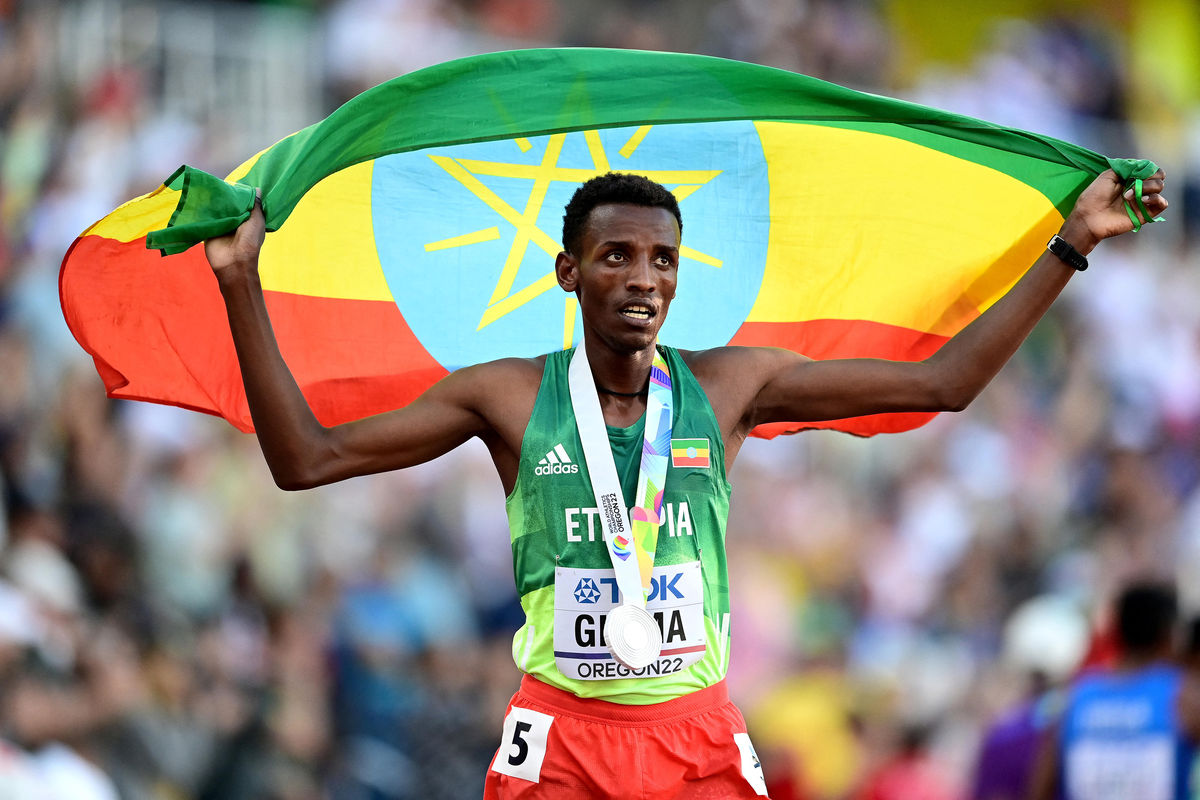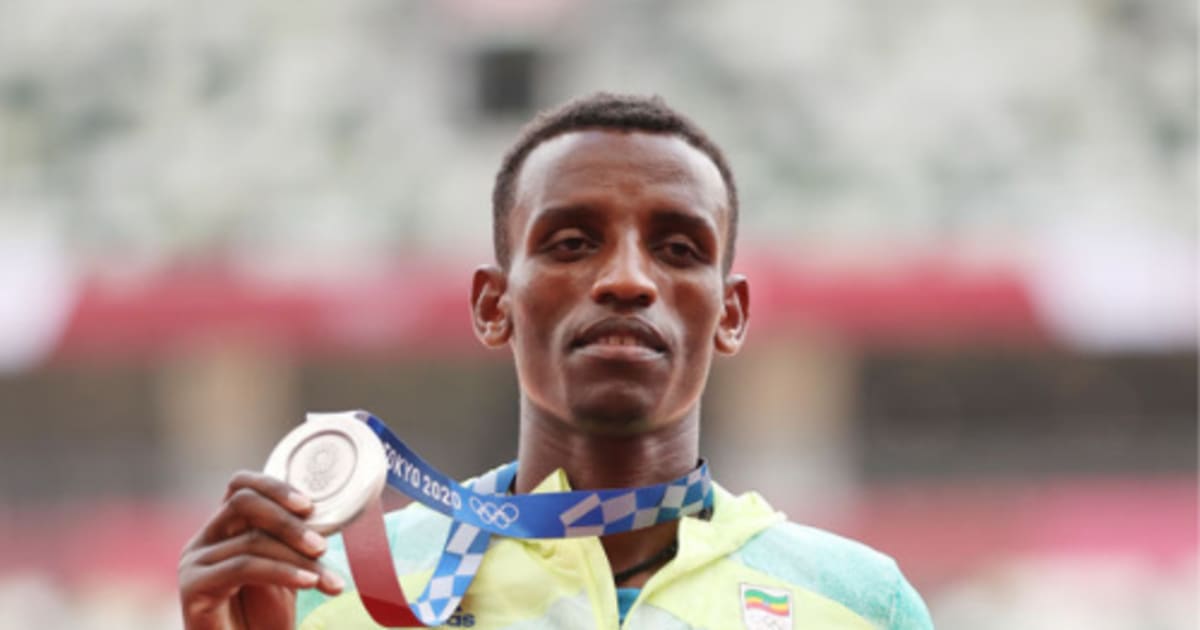Lamecha Girma’s Injury
The Ethiopian middle-distance runner Lamecha Girma, known for his impressive performances in the 3000m steeplechase, has been sidelined due to a hamstring injury. This injury has raised concerns about his participation in upcoming competitions, particularly the World Athletics Championships scheduled for August 2023.
Nature and Severity of the Injury
The injury sustained by Lamecha Girma is a hamstring strain, a common ailment among athletes, especially those involved in high-impact sports. Hamstring strains occur when the muscles at the back of the thigh are overstretched or torn. The severity of the strain can range from a mild, first-degree tear to a complete rupture.
The extent of Lamecha Girma’s hamstring strain has not been publicly disclosed, but initial reports suggest that the injury is significant enough to warrant a period of rest and rehabilitation. The exact diagnosis and prognosis will depend on the specific nature and severity of the injury.
“The injury is a significant setback for Lamecha Girma, but it’s important to remember that hamstring strains are common and can be successfully treated with proper care and rehabilitation.”
Impact on Athletic Performance, Lamecha girma injury update
A hamstring strain can significantly impact an athlete’s performance, particularly in events requiring speed, agility, and explosiveness. Hamstring muscles are crucial for acceleration, deceleration, and maintaining balance. When these muscles are injured, they can limit an athlete’s ability to run, jump, and change direction effectively.
The impact of Lamecha Girma’s hamstring strain on his athletic performance will depend on the severity of the injury and the duration of his recovery. If the injury is severe, it could potentially affect his participation in the upcoming World Athletics Championships.
Rehabilitation and Recovery
Rehabilitation for a hamstring strain typically involves a combination of rest, ice, compression, and elevation (RICE), followed by gradual strengthening and stretching exercises. The duration of rehabilitation can vary depending on the severity of the injury.
“Rehabilitation is crucial for athletes with hamstring strains. The goal is to restore muscle function, strength, and flexibility to prevent re-injury.”
Lamecha Girma’s recovery will depend on the effectiveness of his rehabilitation program and his individual response to treatment. It is important to note that athletes often require several weeks to fully recover from a hamstring strain, and the return to competitive sport should be gradual to minimize the risk of re-injury.
Treatment and Recovery Timeline: Lamecha Girma Injury Update

Lamecha Girma’s injury requires a comprehensive treatment plan to facilitate his recovery and return to competitive athletics. The treatment plan and recovery timeline are tailored to the specific nature of his injury and his individual needs.
Treatment Plan
The initial phase of treatment focuses on managing pain and inflammation. This may involve rest, ice, compression, and elevation (RICE), as well as over-the-counter pain relievers or prescription medications. Physical therapy plays a crucial role in restoring range of motion, strength, and flexibility. A combination of modalities may be used, including:
- Therapeutic exercises: These exercises are designed to strengthen the injured area and improve its function.
- Manual therapy: This involves hands-on techniques to mobilize joints and soft tissues, reducing stiffness and improving mobility.
- Modalities: This may include heat therapy, ultrasound, or electrical stimulation to reduce pain and inflammation and promote healing.
Recovery Timeline
The recovery timeline for a hamstring injury can vary depending on the severity of the injury. However, a general timeline can be Artikeld as follows:
| Stage | Timeline | Description |
|---|---|---|
| Acute Phase | 0-2 weeks | Focus on controlling pain and inflammation. This stage involves rest, ice, compression, and elevation (RICE) to minimize swelling and promote healing. |
| Sub-Acute Phase | 2-6 weeks | This phase focuses on restoring range of motion and flexibility. Gentle exercises and stretching are introduced to gradually increase movement. |
| Return to Activity Phase | 6-12 weeks | This phase focuses on regaining strength and endurance. Athletes begin to gradually increase their activity level, starting with low-impact exercises and progressing to more demanding activities. |
| Return to Competition | 12-16 weeks | Athletes can gradually return to competition once they have regained full strength, flexibility, and endurance. This process may take longer depending on the severity of the injury and individual recovery rate. |
Potential Setbacks
While the provided timeline is a general guideline, it is important to note that recovery can be influenced by various factors. These factors can include:
- Severity of the injury: A more severe injury may require a longer recovery period.
- Individual factors: Age, fitness level, and overall health can influence recovery time.
- Compliance with treatment: Following the prescribed treatment plan is crucial for a successful recovery.
Impact on Upcoming Competitions
)
Lamecha Girma’s injury could significantly impact his participation in upcoming competitions. The severity of the injury, the required recovery time, and the competition schedule will all play a role in determining his availability. His absence or limited participation could have a ripple effect on the competitive landscape, potentially affecting the outcome of major events.
Impact on Competition Schedule
The injury’s impact on Lamecha Girma’s participation in upcoming competitions is a matter of great concern for his fans and the athletics community. The timing of the injury, just before several key events, raises questions about his ability to compete at his best. To illustrate the potential impact, consider the following table:
| Competition | Date | Current Status |
|---|---|---|
| Diamond League Meetings | Throughout the season | Uncertain, dependent on recovery progress |
| World Athletics Championships | August 19 – 27, 2023 | Highly uncertain, potentially a significant blow to the men’s 3000m steeplechase competition |
| Olympic Games | July 26 – August 12, 2024 | Too early to predict, but a full recovery is crucial for his participation |
The table shows the key competitions Lamecha Girma was expected to participate in. His current status for each competition is uncertain and depends heavily on his recovery progress. The World Athletics Championships in August 2023 are particularly crucial, as they represent a significant opportunity for him to compete at the highest level.
“Lamecha Girma’s injury is a significant setback for the sport, and his absence from major competitions could have a considerable impact on the competitive landscape.”
The potential absence of a dominant athlete like Lamecha Girma could create opportunities for other athletes to step up and challenge for top positions. This could lead to unexpected results and add a new dimension to the competitive landscape.
Lamecha girma injury update – It’s been a tough year for Lamecha Girma, with the injury news making fans worried. While we hope for his speedy recovery, it’s worth remembering the legacy of his namesake, Ethiopia’s Girma , a figure who also faced challenges. Hopefully, Lamecha can draw strength from Girma’s story and come back stronger than ever.
Lamecha Girma’s injury update has been a hot topic lately, with fans eager to see him back on the track. While we wait for news, it’s worth remembering the legacy of Ethiopian athletics, embodied by figures like Ethiopia Girma , whose contributions to the sport have inspired generations.
Girma’s story reminds us that even in the face of setbacks, the spirit of Ethiopian athletics remains strong, and we can expect Lamecha Girma to return with renewed determination.
